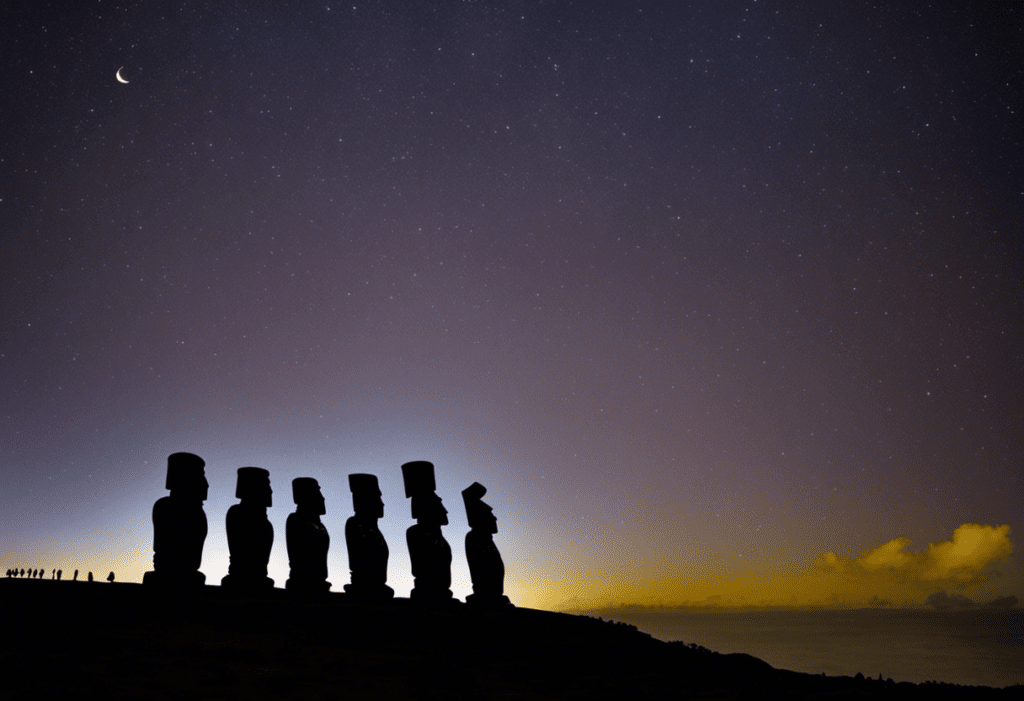Step into the fascinating world of Easter Island Astronomy, where the ancient practice of celestial observations on Rapa Nui unfolds like a captivating story.
Explore the origins of this tradition and the immense importance of studying the heavens.
Learn about the intricate astronomical techniques used by the people of Rapa Nui to navigate the vast Pacific Ocean.
Take a journey to unravel the mysteries and uncover the profound knowledge embedded within the celestial realm of Easter Island.
Key Takeaways
- Early Polynesian settlers brought celestial knowledge to Easter Island in the 4th century AD and used it for tracking seasons, predicting weather patterns, and guiding agricultural practices.
- Rapa Nui astronomers observed stars, planets, and constellations to understand time and aligned structures like the moai statues with celestial events.
- Rapa Nui navigators used celestial wayfinding techniques, along with natural cues, to navigate the Pacific Ocean.
- The celestial knowledge of Rapa Nui played a significant role in their cultural and spiritual life, influencing their rituals, navigation, and daily practices.
The Origins of Easter Island Astronomy
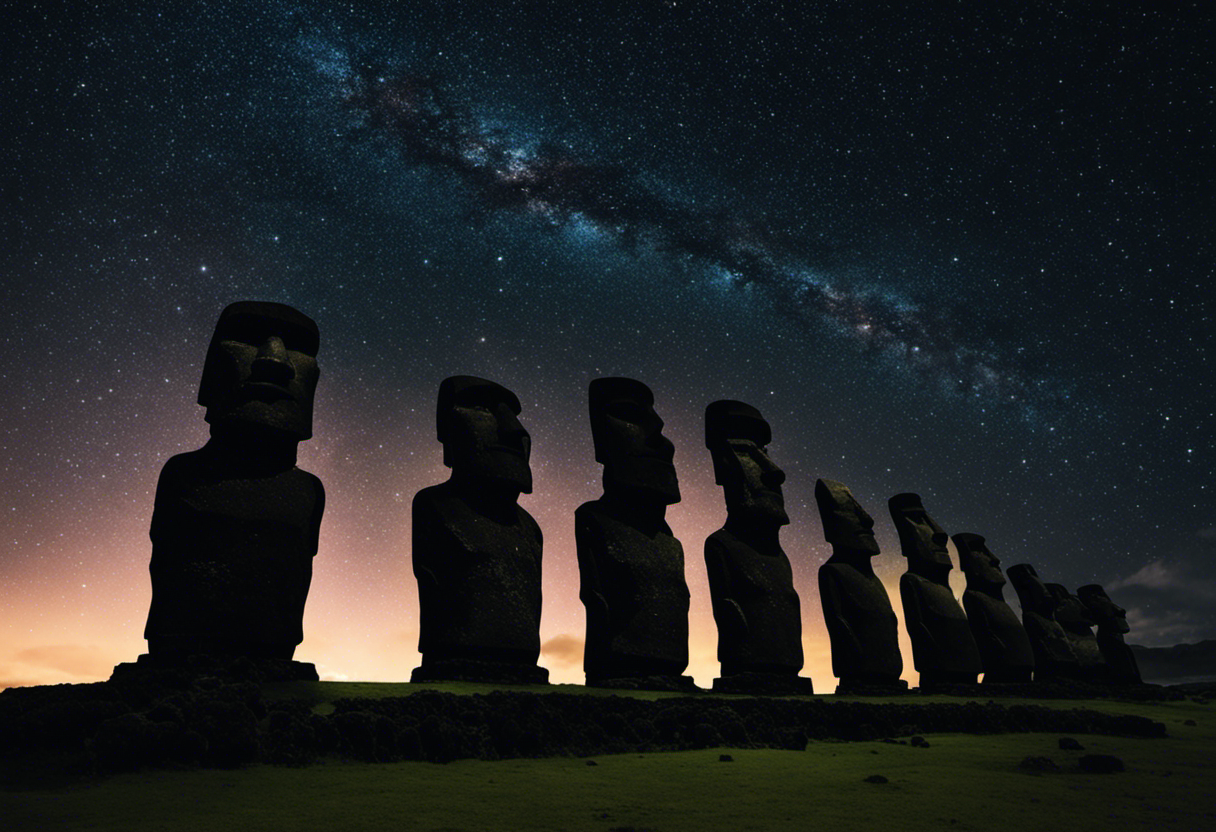

The origins of Easter Island astronomy can be traced back to the early Polynesian settlers who arrived on the island around the 4th century AD. These settlers brought with them a wealth of knowledge about celestial observations and navigation techniques, which they used to navigate the vast expanse of the Pacific Ocean. The first inhabitants of Easter Island, known as the Rapa Nui, had a deep understanding of the stars and the movements of celestial bodies. They used this knowledge to track the seasons, predict weather patterns, and determine the best times for planting and harvesting crops.
Cultural transmission played a crucial role in the development and preservation of Easter Island astronomy. The Polynesian settlers passed down their knowledge through oral traditions, ensuring that future generations would continue to benefit from their astronomical insights. The Rapa Nui also created astronomical artifacts, such as petroglyphs and stone alignments, which served as visual representations of their celestial knowledge. These artifacts not only served as practical tools for observing and interpreting the stars but also played a significant role in the cultural and spiritual life of the Rapa Nui people.
The origins of Easter Island astronomy highlight the deep connection between humans and the cosmos. Through their observations and interpretations of the night sky, the early Polynesian settlers on Easter Island demonstrated their profound understanding of the celestial world and its impact on their daily lives.
The Significance of Celestial Observations
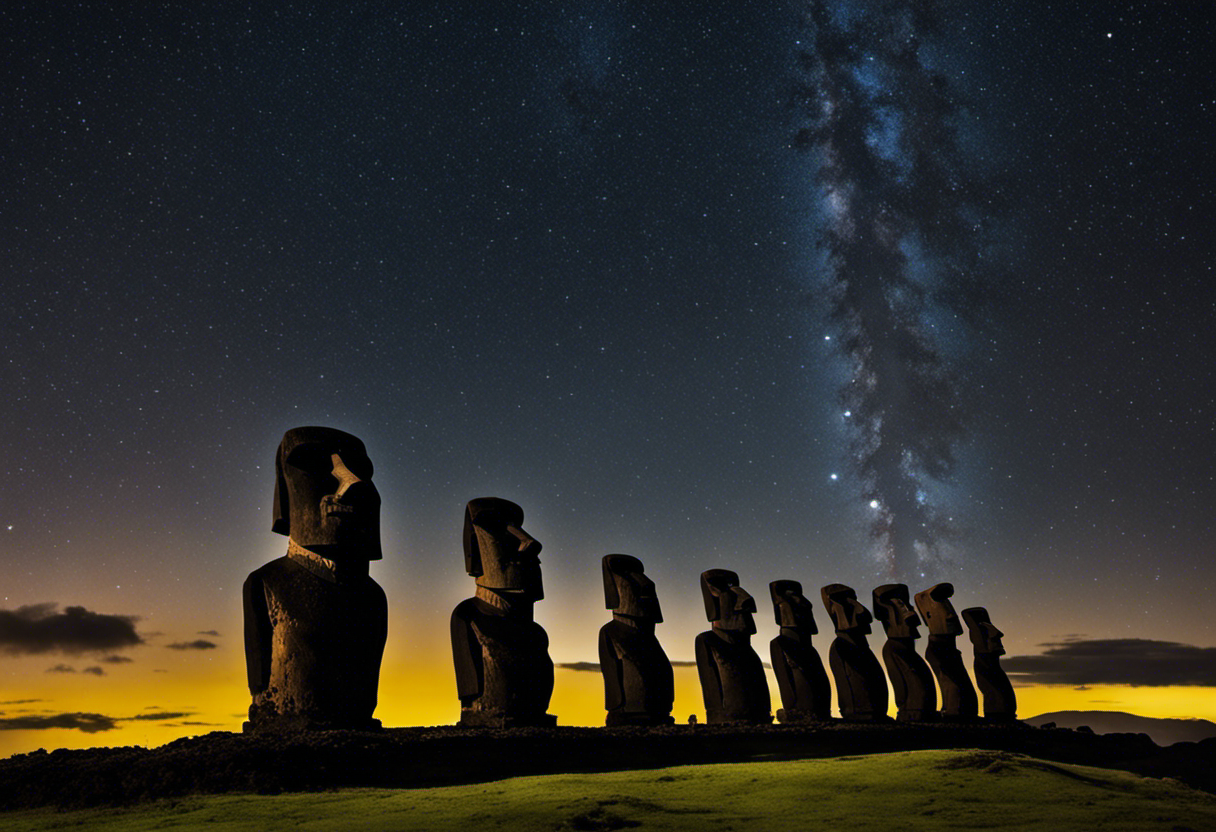

The Importance of Celestial Observations
Celestial observations played a crucial role in shaping the cultural and agricultural practices of the Rapa Nui on Easter Island. They relied on the movements of the stars and celestial bodies to guide their daily lives, making significant scientific discoveries and incorporating them into their cultural traditions.
The Rapa Nui used celestial observations to determine the changing seasons, which was vital for their agricultural practices. By tracking the positions of the stars and celestial bodies, they accurately predicted the timing of planting and harvesting crops. This knowledge helped them optimize their agricultural productivity and sustain their population on the isolated island.
Additionally, celestial observations held spiritual significance in the Rapa Nui’s cultural traditions. They believed that the stars were connected to their ancestors and held great spiritual importance. The alignment of the stars and celestial bodies had symbolic meanings, which they incorporated into their rituals and ceremonies. For example, they believed that the alignment of certain stars with specific ceremonial platforms enhanced the spiritual power of the rituals performed.
Ancient Astronomical Practices on Rapa Nui
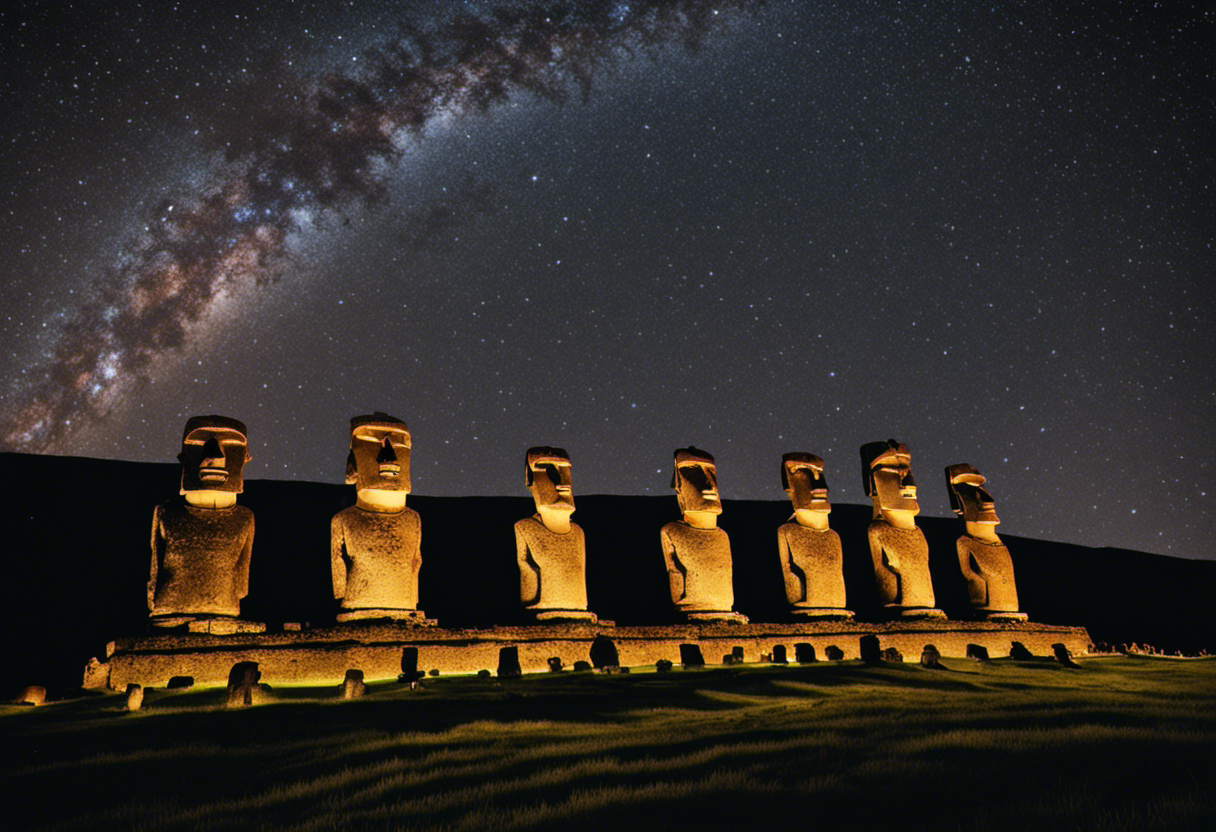

Ancient Rapa Nui practitioners engaged in various astronomical practices to navigate their daily lives and preserve their cultural heritage. These practices held immense cultural significance for the people of Rapa Nui, as they were deeply ingrained in their belief systems and way of life.
One important practice involved observing the stars and celestial bodies. Rapa Nui astronomers carefully studied the movements of the stars, planets, and constellations to comprehend the passage of time and determine significant events such as seasonal changes, the arrival of migratory birds, and optimal fishing and farming periods.
Another crucial practice was aligning structures with celestial events. The iconic moai statues on Easter Island were often positioned to face the rising or setting sun during specific solstices or equinoxes. This alignment served both practical and symbolic purposes, marking important agricultural or ceremonial events and connecting the Rapa Nui people with the celestial realm.
These ancient astronomical practices not only ensured the survival of the Rapa Nui people but also played a vital role in preserving their cultural identity and spiritual connection to the cosmos. They exemplify the profound knowledge, resourcefulness, and reverence for the natural world that characterized the ancient Rapa Nui civilization.
Navigating the Pacific: Celestial Wayfinding Techniques
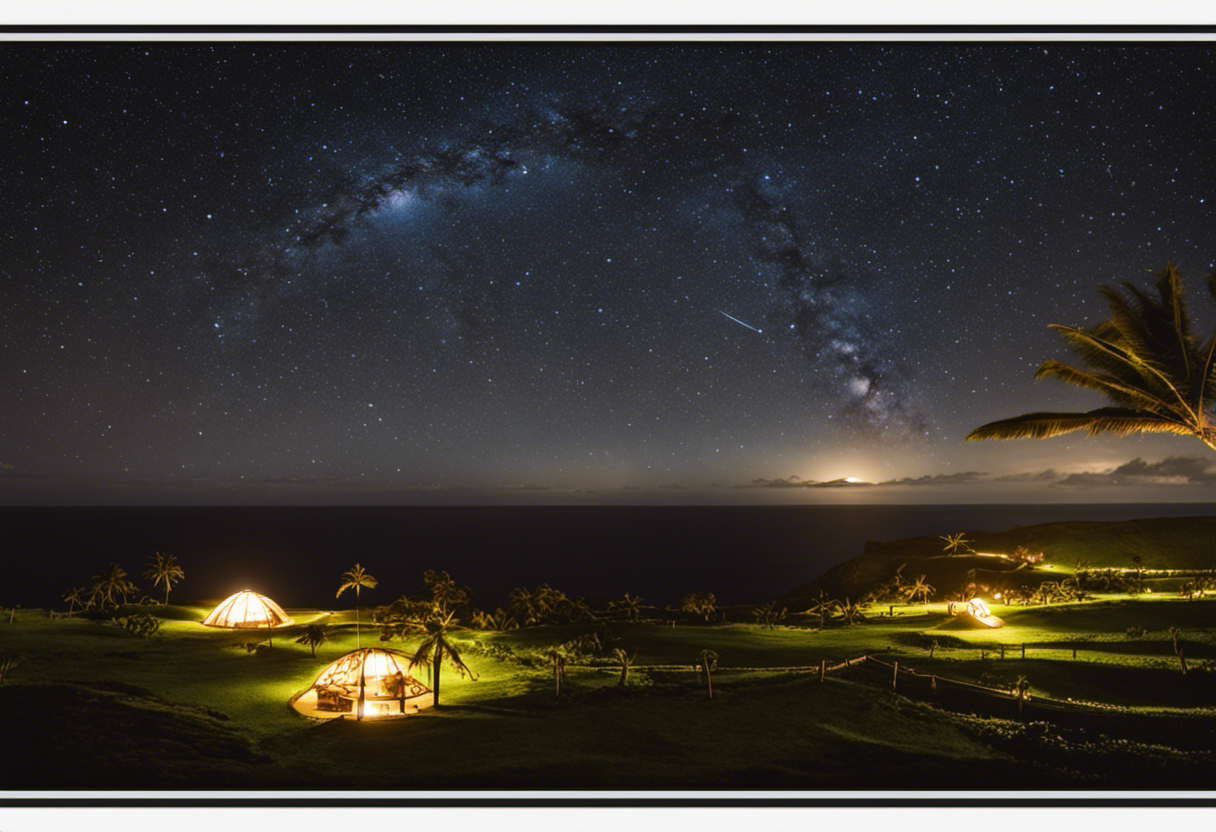

Rapa Nui navigators utilized celestial wayfinding techniques to navigate the expansive Pacific Ocean. This ancient practice played a vital role in Polynesian culture, enabling these skilled seafarers to traverse vast distances without the aid of modern tools. By observing celestial bodies like the sun, moon, stars, and planets, they could accurately determine their position and successfully navigate their voyages.
The navigators of Rapa Nui possessed extensive knowledge of celestial movements and a deep understanding of the celestial sphere. They used stars as reference points to plot their course, taking note of their positions at different times of the year. The sun and moon’s locations also provided valuable information, helping them calculate their direction and distance traveled.
In addition to celestial observations, Rapa Nui navigators relied on natural cues such as ocean currents, wind patterns, and bird migration. By combining these techniques, they developed mental maps of the ocean, allowing them to navigate with remarkable precision.
Celestial wayfinding held not only practical significance for Rapa Nui navigators but also carried great cultural and spiritual importance. Passed down through generations, this skill preserved the knowledge and traditions of their ancestors. Mastering celestial navigation showcased the ingenuity and resilience of the Polynesian people, who traversed the vast Pacific Ocean solely based on their understanding of the celestial realm.
Unraveling the Mysteries of Rapa Nui’s Celestial Knowledge
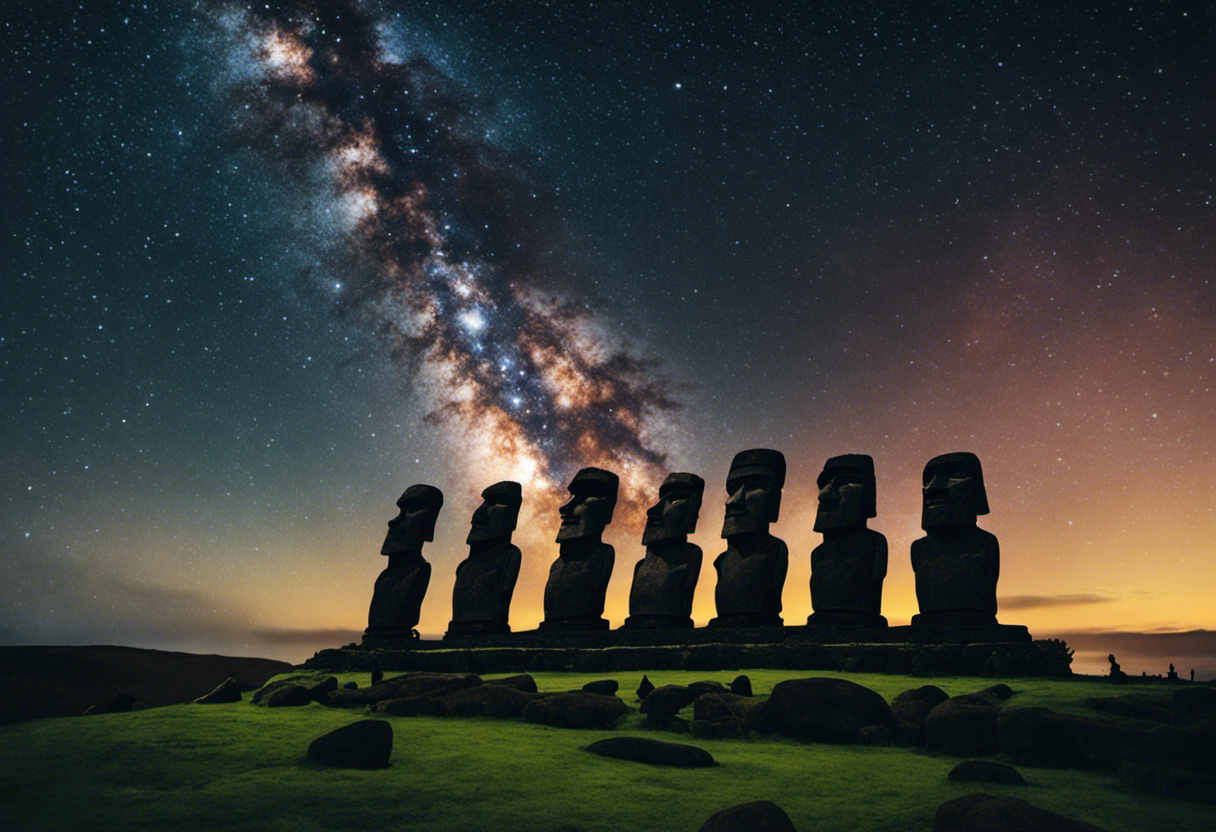

Unraveling the Secrets of Rapa Nui’s Celestial Knowledge
Through extensive research and analysis, scholars have made significant progress in understanding the celestial knowledge held by the navigators of Rapa Nui. This ancient Polynesian culture, renowned for its mysterious stone statues, possessed a profound understanding of celestial bodies and their movements. The celestial knowledge of the Rapa Nui people played a crucial role in their daily lives, rituals, and navigation.
Astronomical discoveries have shed light on the impressive sophistication of Rapa Nui’s celestial knowledge. By observing the stars, Rapa Nui navigators could accurately determine their position on the Earth, aiding them in their long-distance sea voyages. They developed a celestial coordinate system that relied on specific stars as reference points for navigating the vast expanse of the Pacific Ocean. Additionally, the positioning of the moai statues on the island aligns with significant celestial events, suggesting a deep connection between the Rapa Nui culture and the celestial realm.
These astronomical discoveries highlight the advanced understanding of celestial bodies and their movements within the Rapa Nui civilization. Their celestial knowledge not only facilitated navigation but also influenced their cultural practices and beliefs. By unraveling these mysteries, we gain a better understanding of the ingenuity and complexity of the Rapa Nui civilization, emphasizing the significance of their celestial knowledge in shaping their way of life.




